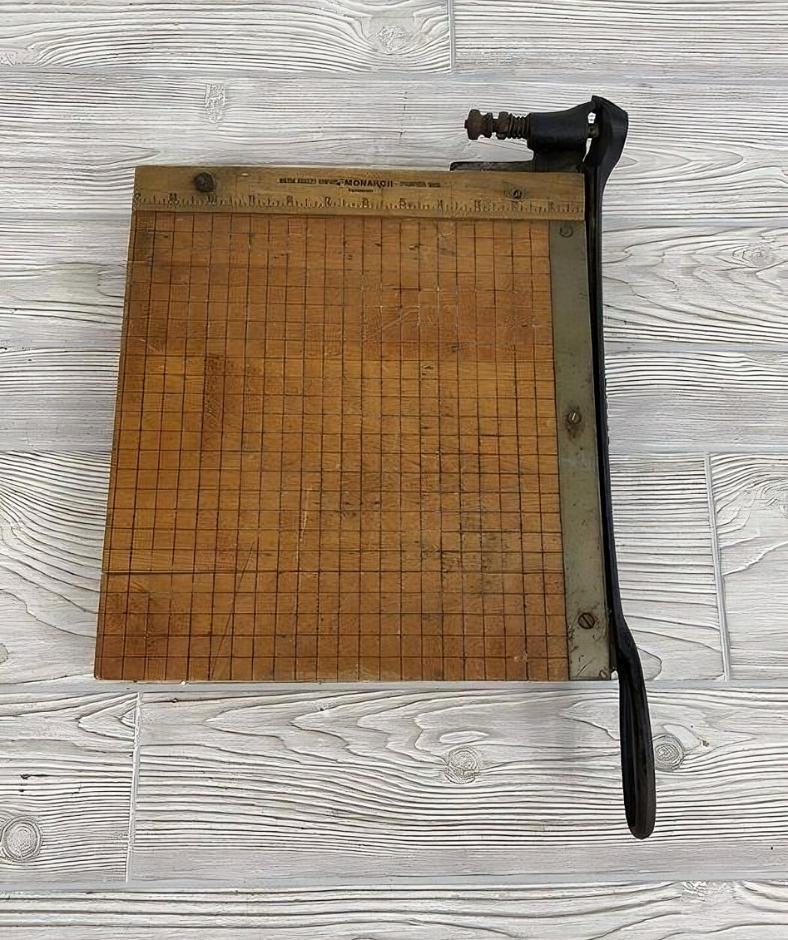The guillotine paper cutter, a deceptively simple device, has long held a unique place in the annals of office and printing history. From its humble beginnings in 19th-century France to its enduring presence in modern workspaces, this iconic tool has played a pivotal role in shaping the way we interact with paper. In this comprehensive article, we will delve into the captivating history, versatile applications, and lasting legacy of the vintage guillotine paper cutter.
The origins of the guillotine paper cutter can be traced back to the early 19th century, when French engineer Guillaume Massiquot patented the device in 1844. Inspired by the fearsome guillotine used for executions, Massiquot’s design employed a sharp blade mounted on a lever arm to slice through paper with unparalleled precision and ease. This innovative approach quickly gained popularity, as the growing demand for accurate paper cutting in offices, print shops, and bookbinding industries drove the need for a reliable and efficient tool.
The vintage guillotine paper cutter became a staple in offices and printing shops throughout the 19th and 20th centuries. Its primary function was to cut large stacks of paper to a uniform size, a crucial task for the production of books, brochures, and other printed materials. The cutter typically featured a wooden or metal base with a built-in ruler for measuring paper, a clamping mechanism to hold the paper stack in place, and a long, levered blade that could be pulled down to slice through the paper.

The guillotine shear was prized for its ability to make clean, straight cuts with minimal effort. The heavy blade and sturdy construction allowed it to cut through multiple sheets of paper at once, significantly improving efficiency in environments where large volumes of paper needed to be processed. This efficiency and precision made the guillotine paper cutter an indispensable tool for a wide range of industries, from publishing to office administration.
The legacy of the vintage guillotine paper cutter is marked by its enduring design and continued influence on modern paper cutting devices. While technology has advanced and many offices now use automated cutting machines, the fundamental principles of the guillotine shear remain relevant. Modern paper cutters still employ a similar levered blade mechanism, albeit with enhancements such as safety guards, ergonomic handles, and precision alignment tools.
Vintage guillotine paper cutters are now considered collectible items, cherished for their historical significance and craftsmanship. Many antique enthusiasts and collectors seek out these devices for their aesthetic appeal and as a symbol of the ingenuity of past generations. In addition, some artists and crafters prefer using vintage cutters for their projects, appreciating the tactile feedback and precision they offer compared to modern alternatives.
The guillotine paper cutter’s impact is also evident in its cultural references. The term “guillotine” has become synonymous with sharp precision and decisive action, often used metaphorically in various contexts. This linguistic legacy underscores the device’s profound influence on both language and industry.
The vintage guillotine paper cutter represents a remarkable blend of engineering, utility, and historical significance. Its evolution from a 19th-century innovation to a modern-day collectible highlights the enduring relevance and fascination with this quintessential office tool. Whether as a functional device or a cherished antique, the guillotine paper cutter continues to captivate and inspire, testament to its timeless design and legacy.


